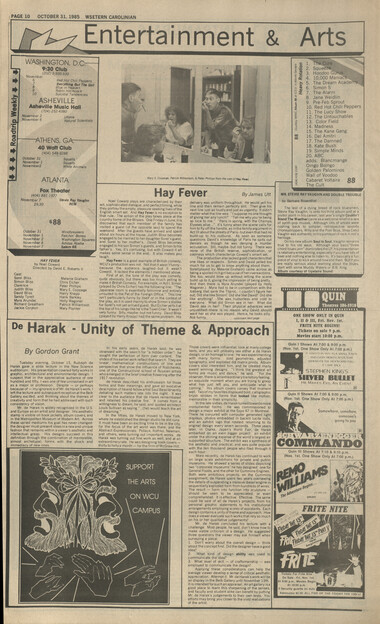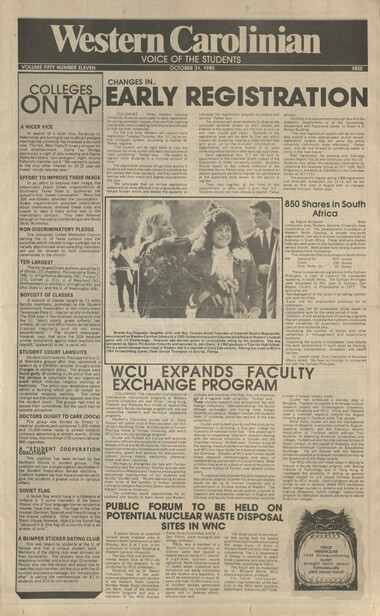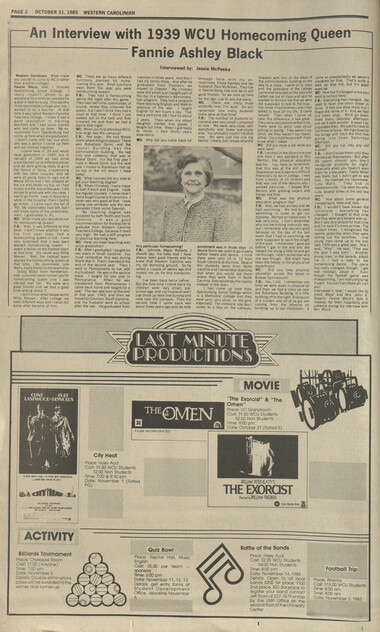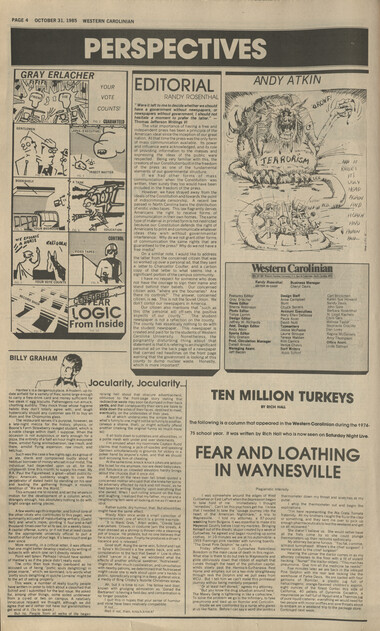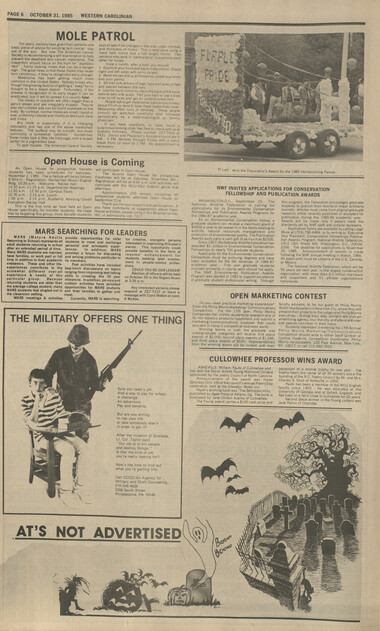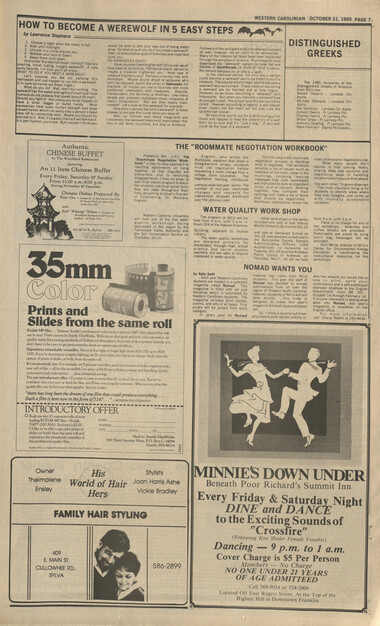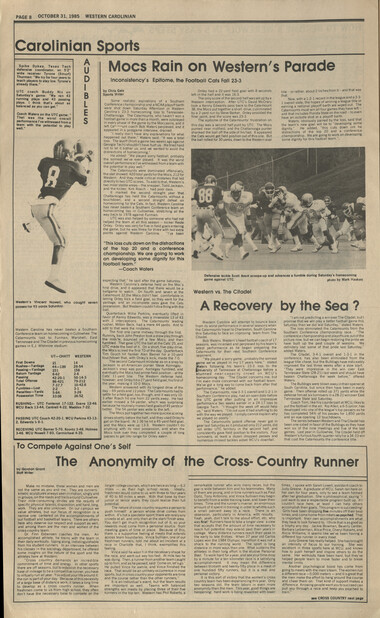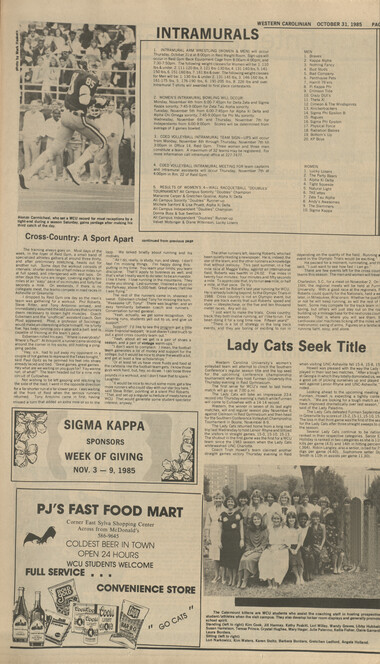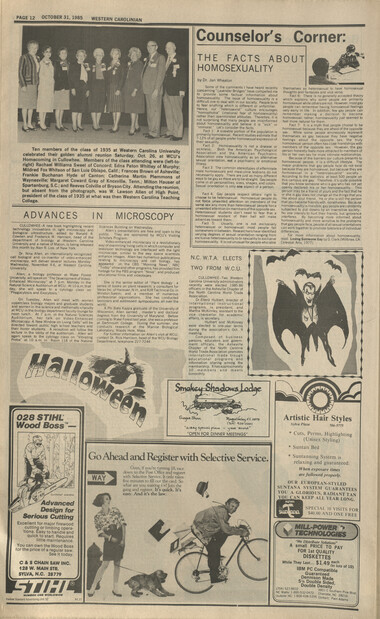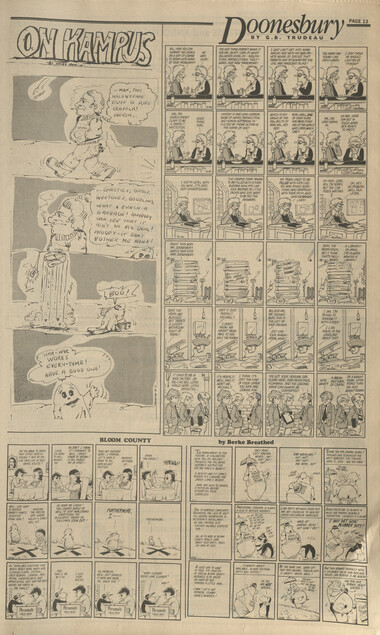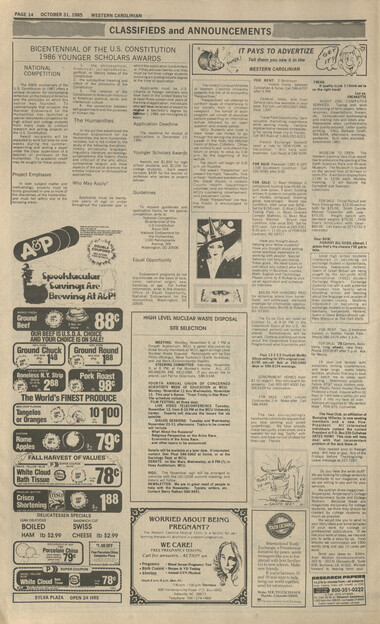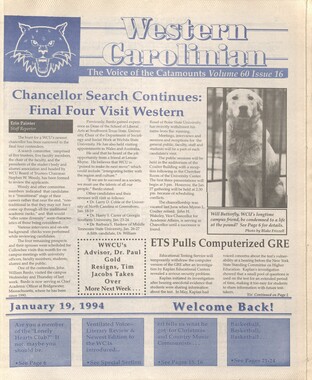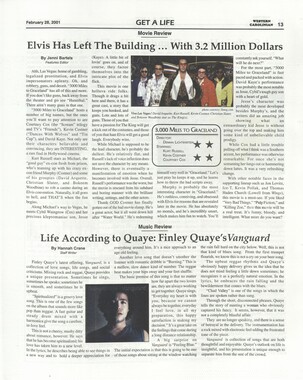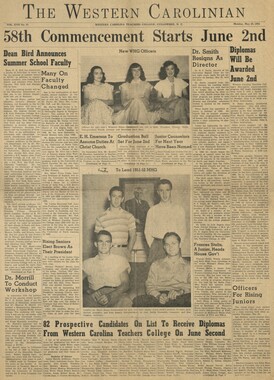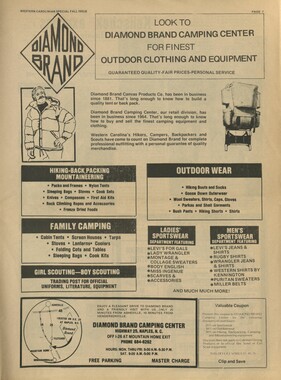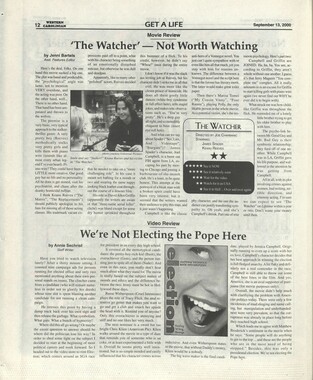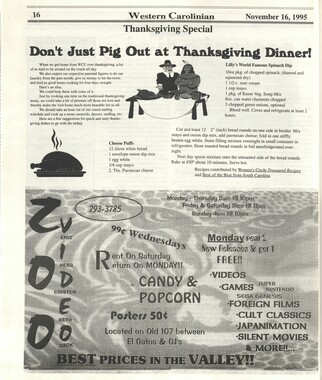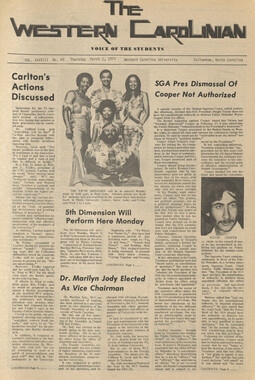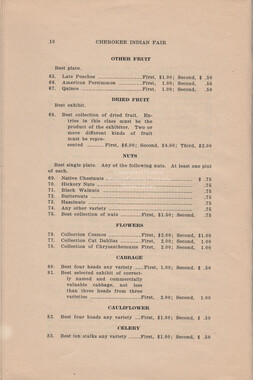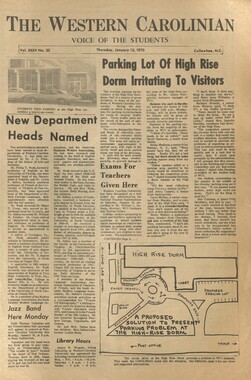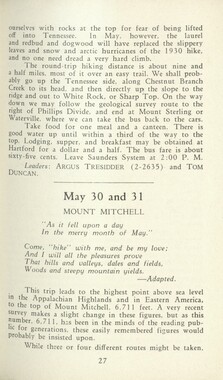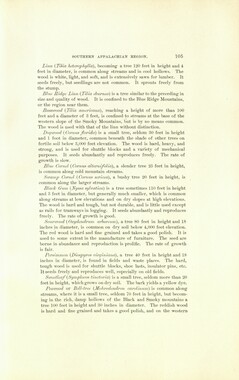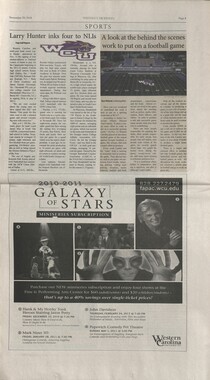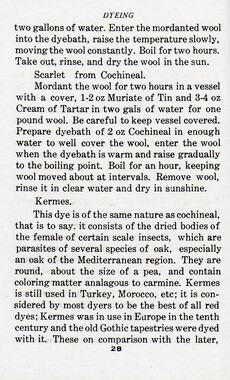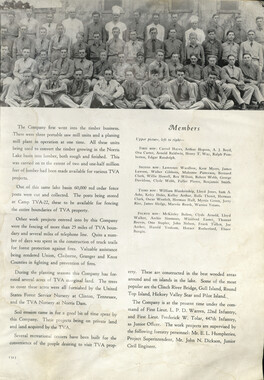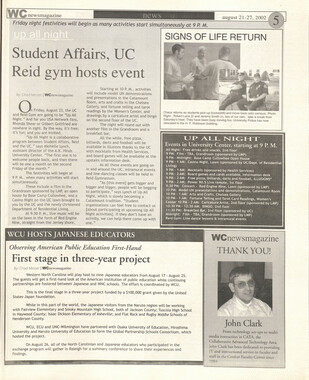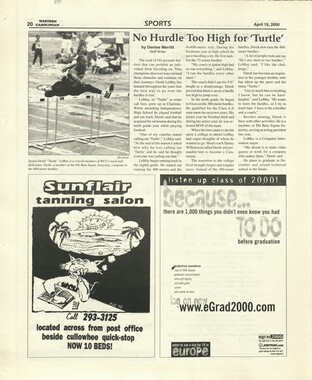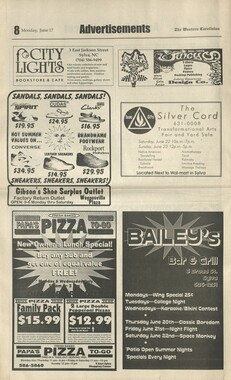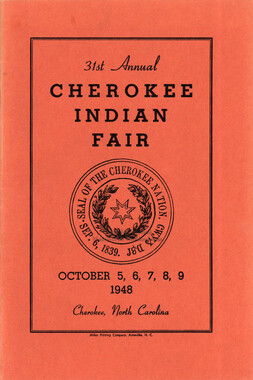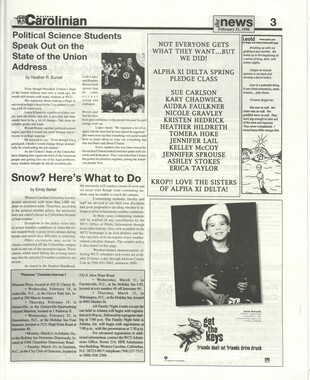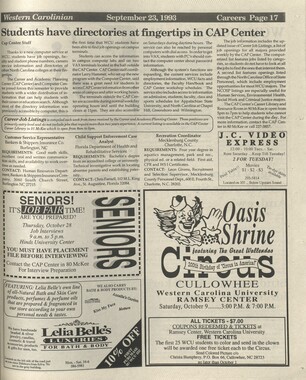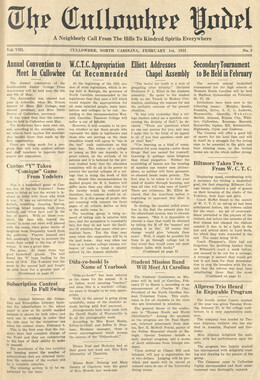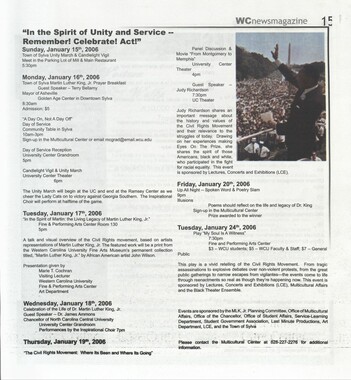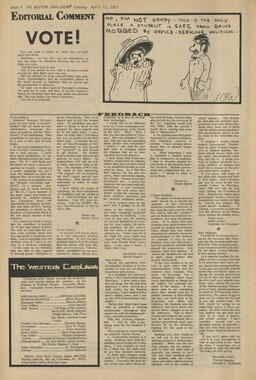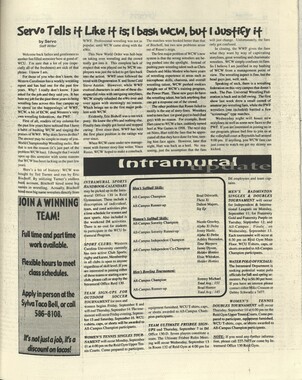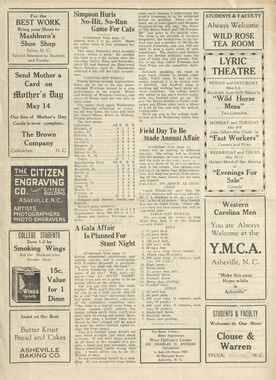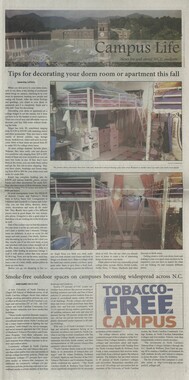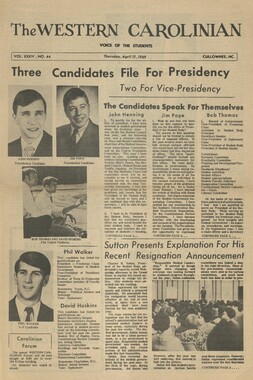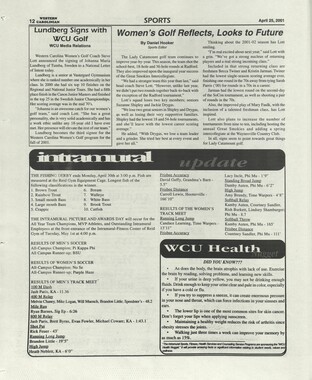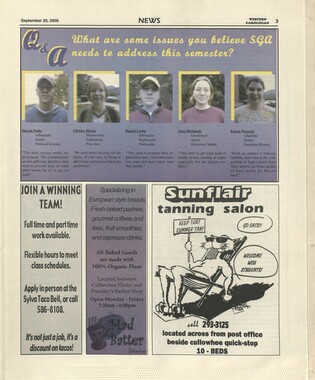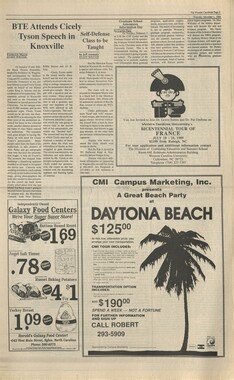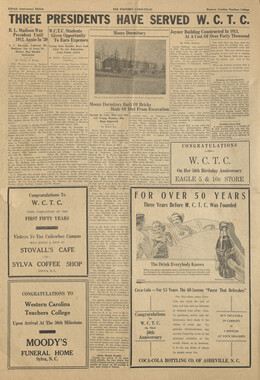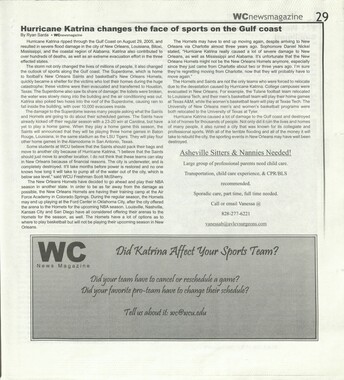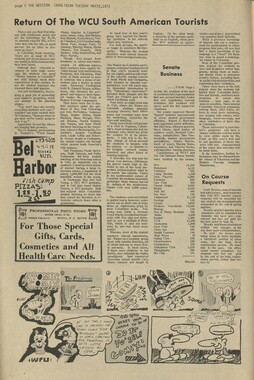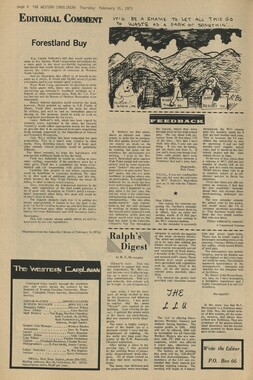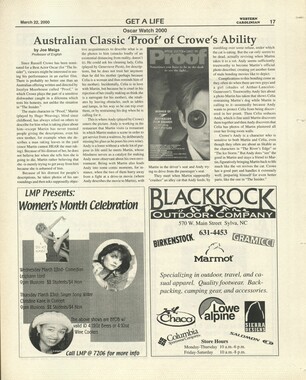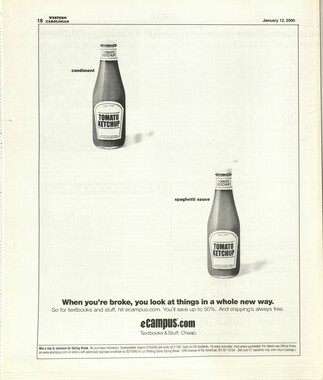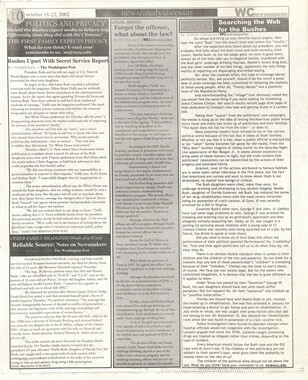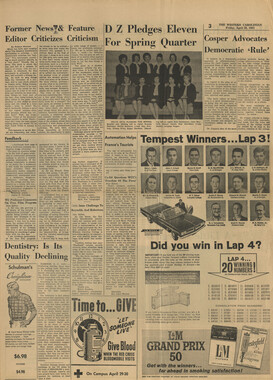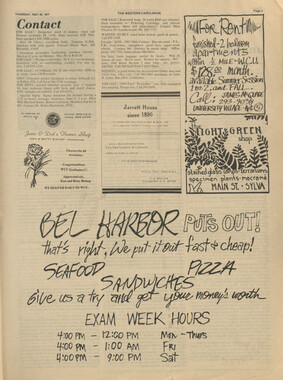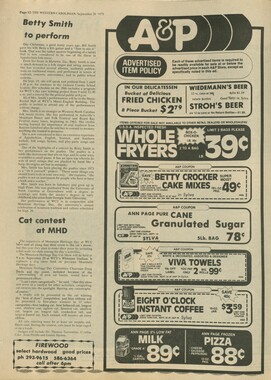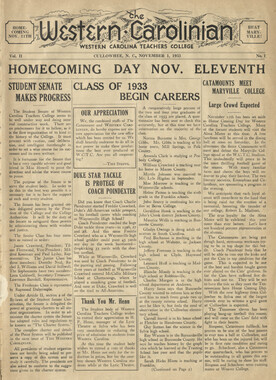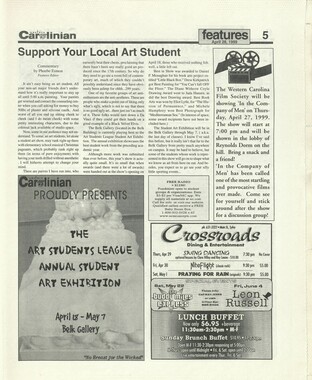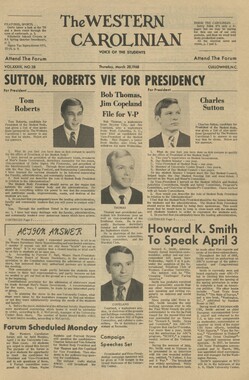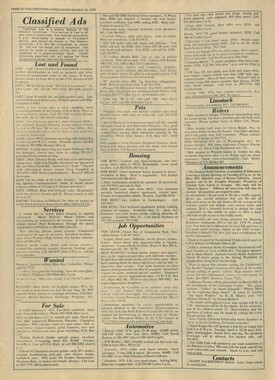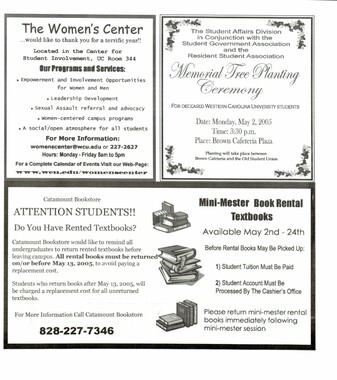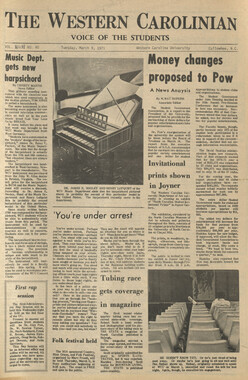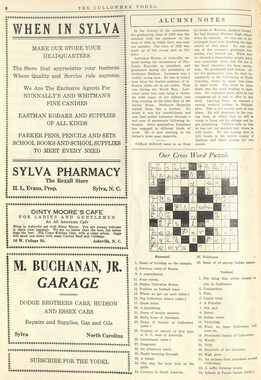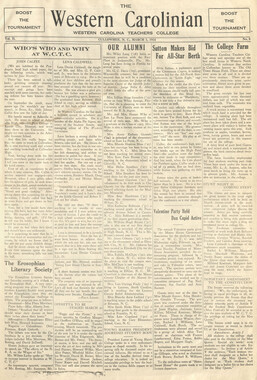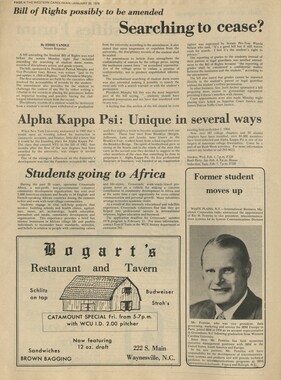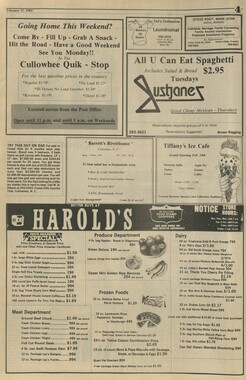Western Carolina University (21)
View all
- Canton Champion Fibre Company (2308)
- Cherokee Traditions (291)
- Civil War in Southern Appalachia (165)
- Craft Revival (1942)
- George Masa Collection (137)
- Great Smoky Mountains - A Park for America (3080)
- Highlights from Western Carolina University (422)
- Horace Kephart (973)
- Journeys Through Jackson (159)
- LGBTQIA+ Archive of Jackson County (89)
- Oral Histories of Western North Carolina (318)
- Picturing Appalachia (6617)
- Stories of Mountain Folk (413)
- Travel Western North Carolina (153)
- Western Carolina University Fine Art Museum Vitreograph Collection (129)
- Western Carolina University Herbarium (92)
- Western Carolina University: Making Memories (738)
- Western Carolina University Publications (2491)
- Western Carolina University Restricted Electronic Theses and Dissertations (146)
- Western North Carolina Regional Maps (71)
- World War II in Southern Appalachia (131)
University of North Carolina Asheville (6)
View all
- Allanstand Cottage Industries (62)
- Appalachian National Park Association (53)
- Bennett, Kelly, 1890-1974 (1463)
- Berry, Walter (76)
- Brasstown Carvers (40)
- Carver, George Washington, 1864?-1943 (26)
- Cathey, Joseph, 1803-1874 (1)
- Champion Fibre Company (233)
- Champion Paper and Fibre Company (297)
- Cherokee Indian Fair Association (16)
- Cherokee Language Program (22)
- Crowe, Amanda (40)
- Edmonston, Thomas Benton, 1842-1907 (7)
- Ensley, A. L. (Abraham Lincoln), 1865-1948 (275)
- Fromer, Irving Rhodes, 1913-1994 (70)
- George Butz (BFS 1907) (46)
- Goodrich, Frances Louisa (120)
- Grant, George Alexander, 1891-1964 (96)
- Heard, Marian Gladys (60)
- Kephart, Calvin, 1883-1969 (15)
- Kephart, Horace, 1862-1931 (313)
- Kephart, Laura, 1862-1954 (67)
- Laney, Gideon Thomas, 1889-1976 (439)
- Masa, George, 1881-1933 (61)
- McElhinney, William Julian, 1896-1953 (44)
- Niggli, Josephina, 1910-1983 (10)
- North Carolina Park Commission (105)
- Osborne, Kezia Stradley (9)
- Owens, Samuel Robert, 1918-1995 (11)
- Penland Weavers and Potters (36)
- Roberts, Vivienne (15)
- Roth, Albert, 1890-1974 (142)
- Schenck, Carl Alwin, 1868-1955 (1)
- Sherrill's Photography Studio (2565)
- Southern Highland Handicraft Guild (127)
- Southern Highlanders, Inc. (71)
- Stalcup, Jesse Bryson (46)
- Stearns, I. K. (213)
- Thompson, James Edward, 1880-1976 (226)
- United States. Indian Arts and Crafts Board (130)
- USFS (683)
- Vance, Zebulon Baird, 1830-1894 (1)
- Weaver, Zebulon, 1872-1948 (58)
- Western Carolina College (230)
- Western Carolina Teachers College (282)
- Western Carolina University (2008)
- Western Carolina University. Mountain Heritage Center (18)
- Whitman, Walt, 1819-1892 (10)
- Wilburn, Hiram Coleman, 1880-1967 (73)
- Williams, Isadora (3)
- Cain, Doreyl Ammons (0)
- Crittenden, Lorraine (0)
- Rhodes, Judy (0)
- Smith, Edward Clark (0)
- Appalachian Region, Southern (3032)
- Asheville (N.C.) (1945)
- Avery County (N.C.) (26)
- Blount County (Tenn.) (195)
- Buncombe County (N.C.) (1680)
- Cherokee County (N.C.) (283)
- Clay County (N.C.) (556)
- Graham County (N.C.) (238)
- Great Smoky Mountains National Park (N.C. and Tenn.) (525)
- Haywood County (N.C.) (3573)
- Henderson County (N.C.) (70)
- Jackson County (N.C.) (4925)
- Knox County (Tenn.) (35)
- Knoxville (Tenn.) (13)
- Lake Santeetlah (N.C.) (10)
- Macon County (N.C.) (421)
- Madison County (N.C.) (216)
- McDowell County (N.C.) (39)
- Mitchell County (N.C.) (135)
- Polk County (N.C.) (35)
- Qualla Boundary (982)
- Rutherford County (N.C.) (78)
- Swain County (N.C.) (2185)
- Transylvania County (N.C.) (270)
- Watauga County (N.C.) (12)
- Waynesville (N.C.) (86)
- Yancey County (N.C.) (72)
- Aerial Photographs (3)
- Aerial Views (60)
- Albums (books) (4)
- Articles (1)
- Artifacts (object Genre) (228)
- Bibliographies (1)
- Biography (general Genre) (2)
- Cards (information Artifacts) (38)
- Clippings (information Artifacts) (192)
- Copybooks (instructional Materials) (3)
- Crafts (art Genres) (622)
- Depictions (visual Works) (21)
- Design Drawings (1)
- Digital Moving Image Formats (2)
- Drawings (visual Works) (185)
- Envelopes (101)
- Exhibitions (events) (1)
- Facsimiles (reproductions) (1)
- Fiction (general Genre) (4)
- Financial Records (12)
- Fliers (printed Matter) (67)
- Glass Plate Negatives (381)
- Guidebooks (2)
- Internegatives (10)
- Interviews (823)
- Land Surveys (102)
- Letters (correspondence) (1045)
- Manuscripts (documents) (618)
- Maps (documents) (177)
- Memorandums (25)
- Minutes (administrative Records) (59)
- Negatives (photographs) (6090)
- Newsletters (1290)
- Newspapers (2)
- Notebooks (8)
- Occupation Currency (1)
- Paintings (visual Works) (1)
- Pen And Ink Drawings (1)
- Periodicals (194)
- Personal Narratives (10)
- Photographs (12977)
- Plans (maps) (1)
- Poetry (6)
- Portraits (4568)
- Postcards (329)
- Programs (documents) (181)
- Publications (documents) (2444)
- Questionnaires (65)
- Relief Prints (26)
- Sayings (literary Genre) (1)
- Scrapbooks (282)
- Sheet Music (2)
- Slides (photographs) (402)
- Songs (musical Compositions) (2)
- Sound Recordings (802)
- Specimens (92)
- Speeches (documents) (18)
- Tintypes (photographs) (8)
- Transcripts (329)
- Text Messages (0)
- A.L. Ensley Collection (275)
- Appalachian Industrial School Records (7)
- Appalachian National Park Association Records (336)
- Axley-Meroney Collection (2)
- Bayard Wootten Photograph Collection (20)
- Bethel Rural Community Organization Collection (7)
- Blumer Collection (5)
- C.W. Slagle Collection (20)
- Canton Area Historical Museum (2110)
- Carlos C. Campbell Collection (462)
- Cataloochee History Project (64)
- Cherokee Studies Collection (4)
- Daisy Dame Photograph Album (5)
- Daniel Boone VI Collection (1)
- Doris Ulmann Photograph Collection (112)
- Elizabeth H. Lasley Collection (1)
- Elizabeth Woolworth Szold Fleharty Collection (4)
- Frank Fry Collection (95)
- George Masa Collection (173)
- Gideon Laney Collection (452)
- Hazel Scarborough Collection (2)
- Hiram C. Wilburn Papers (28)
- Historic Photographs Collection (236)
- Horace Kephart Collection (861)
- Humbard Collection (33)
- Hunter and Weaver Families Collection (1)
- I. D. Blumenthal Collection (4)
- Isadora Williams Collection (4)
- Jesse Bryson Stalcup Collection (47)
- Jim Thompson Collection (224)
- John B. Battle Collection (7)
- John C. Campbell Folk School Records (80)
- John Parris Collection (6)
- Judaculla Rock project (2)
- Kelly Bennett Collection (1482)
- Love Family Papers (11)
- Major Wiley Parris Civil War Letters (3)
- Map Collection (12)
- McFee-Misemer Civil War Letters (34)
- Mountain Heritage Center Collection (4)
- Norburn - Robertson - Thomson Families Collection (44)
- Pauline Hood Collection (7)
- Pre-Guild Collection (2)
- Qualla Arts and Crafts Mutual Collection (12)
- R.A. Romanes Collection (681)
- Rosser H. Taylor Collection (1)
- Samuel Robert Owens Collection (94)
- Sara Madison Collection (144)
- Sherrill Studio Photo Collection (2558)
- Smoky Mountains Hiking Club Collection (616)
- Stories of Mountain Folk - Radio Programs (374)
- The Reporter, Western Carolina University (510)
- Venoy and Elizabeth Reed Collection (16)
- WCU Gender and Sexuality Oral History Project (36)
- WCU Mountain Heritage Center Oral Histories (25)
- WCU Oral History Collection - Mountain People, Mountain Lives (71)
- WCU Students Newspapers Collection (1923)
- Western North Carolina Tomorrow Black Oral History Project (69)
- William Williams Stringfield Collection (2)
- Zebulon Weaver Collection (109)
- African Americans (390)
- Appalachian Trail (35)
- Artisans (521)
- Cherokee art (84)
- Cherokee artists -- North Carolina (10)
- Cherokee language (21)
- Cherokee pottery (101)
- Cherokee women (208)
- Church buildings (190)
- Civilian Conservation Corps (U.S.) (111)
- College student newspapers and periodicals (2012)
- Dams (108)
- Dance (1023)
- Education (222)
- Floods (63)
- Folk music (1015)
- Forced removal, 1813-1903 (2)
- Forest conservation (220)
- Forests and forestry (1198)
- Gender nonconformity (4)
- Great Smoky Mountains National Park (N.C. and Tenn.) (181)
- Hunting (47)
- Landscape photography (25)
- Logging (122)
- Maps (83)
- Mines and mineral resources (9)
- North Carolina -- Maps (18)
- Paper industry (38)
- Postcards (255)
- Pottery (135)
- Railroad trains (72)
- Rural electrification -- North Carolina, Western (3)
- School integration -- Southern States (2)
- Segregation -- North Carolina, Western (5)
- Slavery (5)
- Sports (452)
- Storytelling (243)
- Waterfalls -- Great Smoky Mountains (N.C. and Tenn.) (66)
- Weaving -- Appalachian Region, Southern (280)
- Wood-carving -- Appalachian Region, Southern (328)
- World War, 1939-1945 (173)
Western Carolinian Volume 50 Number 11
Item
Item’s are ‘child’ level descriptions to ‘parent’ objects, (e.g. one page of a whole book).
-
-
PAGE 10 OCTOBER 31, 1985 WSETERN CAROLINIAN Fox Theater (404) 881-1977 November 7 Stevie R»y Vaughn 29.30 REM . 688 October 31 November 1 November 2 November 6 November 7 Windbreakers Fetchin' Bones Washington Squares Adidas Ababa Salem 66 Hay Fever By James Utt HAY FEVER by Noel Coward Directed by David E. Roberts II Cast: Sore I Bliss Simon Bliss Clarence Judith Bliss David Bliss Sandy Tyrell Myra Arundel Richard Greatham Jackie Coryton Melanie Graham Chris Eicher Peter Phillips Mary E. Coppage Harry Knapp Hank Barkley Holly Wagoner Patrick Williamson Mary Poynter Noel Coward plays are characterized by their wit, sophisticated dialogue, and perfect timing, while they portray the empty, pleasure-seeking livesof the English smart set. And Hay Fever is no exception to that rule. The action of the play takes place at the country home of the Blisses. One Friday in June, it is discovered that each member of the family has invited a guest (of the opposite sex) to spend the weekend. After the guests have arrived and spent about six hours at the house, Judith Bliss becomes engaged to be married to herdaughterSorel'sguest, and Sorel to her mother's. David Bliss becomes engaged to his son Simon's guests, and Simon to his father's. Yes, it's confusing, but with Coward it all makes some sense in the end. It also makes you laugh. Hay Fever is a good example of British comedy, WCU's production was not. Not that it wasn'tfunny-- because the audience laughed-but it wasn't Coward. It lacked the elements I mentioned above. First of all, the tone of the play was comedy, quite obviously, but there was too much yelling to make it British Comedy. Forexample, in Act I, Simon (played by Chris Eicher) has the following line: "The Japanese room is essentially feminine and entirely unsuited to the Pet of the Foreign Office." This line isn't particularly funny by itself or in the context of the play, as it is used mainly to show Simon's dislike forSorel's not-yet-arrived guest. But Eicheryellsitat the top of his lungs like he's the Town Crier. It wasn't very funny. Silly, maybe-but not funny. David Bliss (played by Harry Knapp) had the same problem. His delivery was uniform throughout: He would yell his line and then remain perfectly still. Then give his next line just as loudly and just as urgently. It didn't matter what the line was: "I suppose no one thought of giving her any lunch?" "Tell me why you're being so nice to me." "Paris in spring, with the Champs Elysees alive..." It's funny when the scene calls for him to fly off the handle, as in the family argument in Act III aboutthe streets of Paris-but even that had no build-up to his outburst. As soon as someone questions David's knowledge of Paris he spits out denials as though he was denying a murder accusation. Sill, maybe--but not funny. There was none of the British reserve, sophistication, or coolness which characterize Coward's smart set. The production also lacked good characters that one likes or respects. Simon and David yelled too much for us to get to know anything about them. Sorel(played by Melanie Graham) came across as being a spoiled rich girl because of her overeactions. She too, would blow up without letting the scene build up to it, giving the impression of being pretty. And then there is Myra Arundel (played by Holly Wagoner.) Myra had to be in competition with the iceberg that sank the Titanic. I couldn't figure her out; Did she like Simon? Did she like David? Did she like anything? She was humorless and cold to everyone. What did Simon see in her: What did David see in her? Their physical advances were unjustified--there is no reason why David should want her as she was played. Hence, he looks silly. Not funny. continued next page De Harak - Unity of Theme & Approach By Gordon Grant Tuesday evening, October 15, Rudolph de Harak gave.a slide lecture in the New Science auditorium. His presentation covered forty works in graphic, architectural and environmental design. I suspect that in the appreciative audience of one hundred and fifty, I was one of few uninvolved in art as a major or profession. Despite — or perhaps because of — my ignorance of Mr. deHarak'swork, I left the lecture and subsequent reception at the Belk Gallery excited, and thinking about the themes of creativity and form that he had addressed with such consistency of vision. Mr. de Harak is widely recognized in the U.S. and Europe as an artist and designer. His aesthetic stamp is visible on book jackets, album covers, and in the Metropolitan Museum of Modern Art. Across these, varied mediums his goal has never changed: the designer must present ideas in a newand unique fashion that remains within a viewer's aesthetic and intellectual grasp. His designs succeed in this definition through the combination of memorable, almost archetypal, forms with the shock and immediacy of new ones. In his early years, de Harak said, he was obsessed with the search for "a hidden order": he sought the perfection of form over content. The slidesof hisearlierwork reflect that search. Theyare linear, mathematical constructions of line and perspective that show the influence of Rodchenko, one of the Constructivist school of Russian artists who emerged inthe brief creative flowering after the 1917 revolution. de Harak described his enthusiasm for those forms and their meanings, and gave an evocative description of heand fellowartistSaul Bass fervently debating such matters late into the night. It was clear to the audience that de Harak remembered and retained his creative fire. It comes from a willingness to dream, he said, and quoted architect Louis Sullivan as saying "...(he) would teach the art of dreaming." In the fifties, de Harak moved to New York, where he established the design studio he still runs: It must have been an exciting time to be in the city, for the focus of the art world was there, and the Abstract Expressionists: Pollack, Rothko, Newman, and others, were turning out important works, de Harak was turning out fine work as well, and at an extraordinary rate. He was designing book covers — thirty to forty a month —forthe firm of McGraw-Hill. Those covers were influential; look at many college texts, and you will probably see either a de Harak design, or an homage to one. He was experimenting with many forms: bold geometries, adjusted typography, and exploded dot matrix prints. Album covers also interested him, and he created many award winning designs. "I think the greatest art forms are music and dance," he said. "For the observer, there is an extraordinarytransitory feeling: an exquisite moment when you are trying to grasp what has just left you, and anticipate what is coming." His album covers convey that moment well. Twoof myfavoritesdisplayedbold,calligraphic brush strokes in forms that looked like motion; memorable in their simplicity. Inthe latesixties.de Harak turned towards more monumental forms. He was commissioned to design a major exhibit at the Expo 67 in Montreal. There he conjured with computer generated light displays, photos embedded in backlit lucite rods, and an exhibit logo that rotated: returning to its original design every seven seconds. Three years later, in Osaka, Japan's World Fair, de Harak embarked on an even bigger project: an exhibit under the shining expanse of the world's largest air supported structure. The exhibit was a synthesis of the aesthetic and practical, and was quite popular with the ten thousand people who filed through it each hour. More recently, de Harak has continued to work on large scale exhibitions for private and public museums. He showed a series of slides depicting two "corporate museums" he has designed: one for General Foods, and the other for Cummins Engines. Both were ambitious projects; on the Cummins assignment, de Harak spent two years overseeing the details of suspending a massive diesel engine in sequentially exploded form from hundreds of wires. The result — form into function into sculpture — should be seen to be appreciated, or even comprehended. It is effective. Effective. The same could be said of all de Harak's projects, from his personal graphic statements to his institutional arrangements employing scores of assistants. Each design contains a unity of theme and approach. How does a viewer evaluate such works that rely so much on his or her qualitative judgements? Mr. de Harak concluded his lecture with a challenge. Most people, he said, don't know how to make viable criticism of a design. He suggested three questions the viewer may ask himself when surveying a piece: 1. Don't worry about the overall design — think about the concept f i rst. Did the designer have a good idea? 2. What kind of design ability was used to communicate the idea? 3. What level of skill — of craftsmanship — was employed to communicate the design? Applying these considerations can help the average viewer develop a sense of critical aesthetic appreciation. Attempt it. Mr. deHarak'swork will be on display in the Belk Gallery until November 13th. It is intended for such an appraisal. An art gallery is a good place to learn this sharpening of the senses, and faculty and student alike can benefit by putting Mr. de Harak's judgements to their own tests. You efforts may bring you closer to the vivid realizations of the artist. MR. STEVIE RAY VAUGHN AND DOUBLE TROUBLE by Barbara Rosenthal The last of a dying breed of rock bluesmen, Stevie Ray Vaughn, is onto his third album and at a pivitol point in his career, last year's single Couldn't Stand The Weather came as a welcome relief in a sea of synth-pop muzak. Although lots of artists were rushing back to simpler, retrospective sounds (Honeydrippers, Willy and the Poor Boys, Stray Cats) Vaughn was authentic in his portrayal of rock-n-roll's heritage. On his new album Soul to Soul, Vaughn remains true to his old ways. Although your basic"three chord blues jam" dominatestheLP, his presentation is relativelyentertaining, especially if you have lots of beer and nothing else to listen to. It's basically a fun piece of vinyl to kick around now and then. But if you are really serious about learning about the blues, start with some Muddy Waters or B.B. King. Album courtesy of Upstairs Sound. ONE SHOW ONLY IN QUIN I, II tf III, Fri. Nov. 1st. FRITE NITE BEGINS! Tickets on sale 9 p.m. Movies start 10:00 p.m. Quin I Shows At 7:00 & 9:00 p.m. (Nov. 1st. One Show Only At 7:00 p.m.) It SIAIUFDINMAY IN A SMALL TOWN AND LVF.IIY MONTH AFTER THAT WHFNWR THI MCXTN WAS HJIL IT CAMF RACK STEPHEN KING'S IILVEH BUULET He Makes Evil An Event. IB f Quin II Shows At 7:00 & 9:00 p.m. (Nov. 1st. One Show Only At 7:00 p.m.) I Somewhere, somehow, someone's going to pay. II vM*kvK^W>h« COMMANDO Quin III Shows At 7:10 & 9:10 p.m. (Nov. 1st. One Show Only At 7:00 p.m.)
Object
Object’s are ‘parent’ level descriptions to ‘children’ items, (e.g. a book with pages).
-
The Western Carolinian is Western Carolina University’s student-run newspaper. The paper was published as the Cullowhee Yodel from 1924 to 1931 before changing its name to The Western Carolinian in 1933.
-
